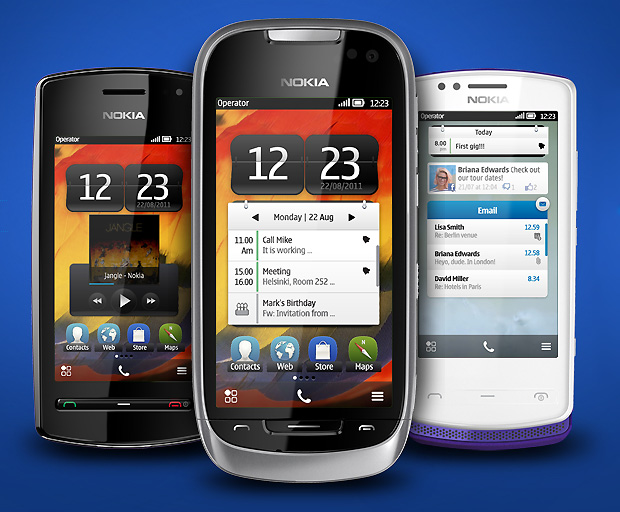
Finland’s Nokia is in the midst of switching over to Microsoft’s Windows Phone platform, but since the first devices aren’t due to ship until the end of this year—and won’t start shipping in earnest until 2012—Nokia has to do something to try to keep its current customers happy. Today, that’s Symbian Belle, a new revision to its Symbian 3 operating system that includes a selection of modern smartphone features. The operating system will debut on three new Nokia handsets—the 600, 700, and 701—which all feature near-field communication (NFC) technology for mobile payments.
However, don’t expect to see Symbian Belle or the new Nokia handsets in North America: Nokia is foregoing Symbian in the North American market to put all its weight behind Windows Phone devices when they debut. So Nokia’s new handsets will be available only in Europe, Asia, and other markets.
The new handsets follow up on Nokia’s announcement that new handsets would only be identified by numbers; the higher the number, the higher a particular device is in Nokia’s product hierarchy. Phones with lower numbers will mainly be intended for budget buyers or emerging markets.
Symbian Belle expands the number of homescreens Symbian 3 supports from three to six, and the lock screen not carries information about new messages and missed calls. Nokia also says Symbian Belle offers improved multitasking support, along with redesigned widgets in a number of sizes to handle things like contacts, email, calendar items, and music.
The Nokia 701 features a 3.5-inch LCD display that Nokia says is the brightest screen ever offered on a phone—perhaps handy when using the display as an impromptu light. The 701 also features an 8 megapixel camera with a dual LED flash. The 700 scales back to a 3.2-inch AMOLED display, 5 megapixel camera, while the 600 offers a 3.2-inch LCD display and what Nokia claims is the loudest speakerphone in Nokia’s product history. The 600 should go for about €180 after taxes and subsidies; the 700 will run about €270, while the 701 jumps to €290. All three sport 1 GHz processors, and should be available in the third quarter of 2011.
Although Nokia has shuffled Symbian support and development over to Accenture, the company plans to continue developing and supporting Symbian for some years, with CEO Stephen Elop indicating Symbian would continue to exist through at least 2016. While Nokia remains the world’s largest handset manufacturer, the bulk of its sales are lower-end devices sold into emerging markets like India, Africa, and China—which are the same places Symbian is likely to see its longest life. In mature markets like Europe and North America, Nokia will be converting to Windows Phone as quickly as it can in an effort to compete with Android devices, RIM, and—of course—the Apple iPhone.


